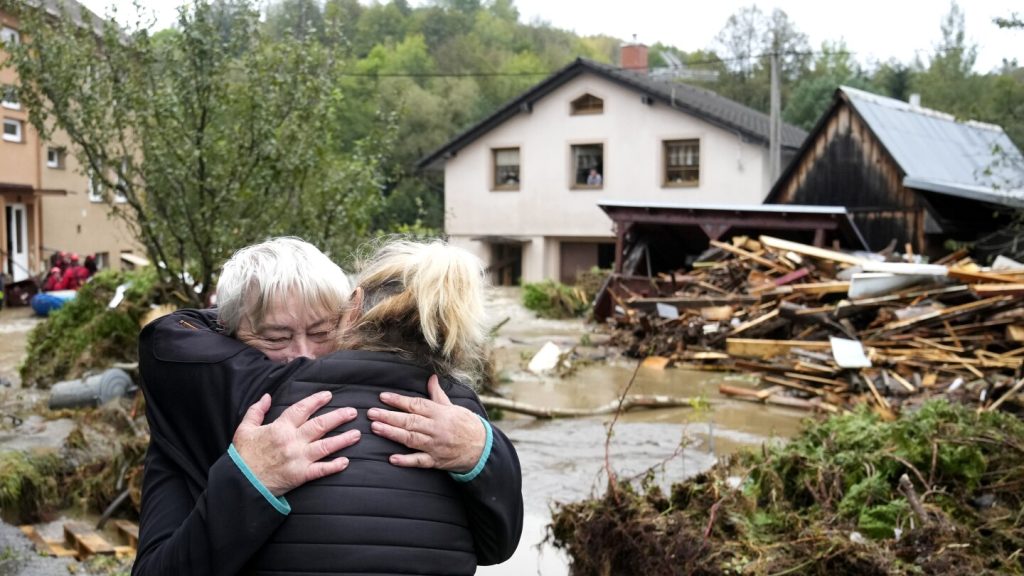Central European countries are facing severe flooding and rising death tolls after days of heavy rains. The countries most affected include Austria, the Czech Republic, Poland, and Romania, with Slovakia and Hungary possibly being impacted next. The floods have already claimed lives in Romania, Austria, and Poland, with multiple people reported missing in the Czech Republic. Officials have issued the highest flood warnings in over 100 places across the Czech Republic, with the situation particularly dire in northeastern regions near the Polish border.
In the Czech Republic, thousands of people have been evacuated from towns like Opava, where the Opava River has flooded neighborhoods. The mayor of Opava urged residents to move to higher ground, stating that the situation is worse than the devastating floods of 1997. The country’s Prime Minister emphasized the need to focus on saving lives, as authorities work to assess damages and provide relief efforts. Villages in the Jeseniky mountains have been inundated, with roads turned into rivers and bridges damaged. The situation remains critical, with power outages affecting hundreds of thousands of households.
In Lower Austria, a firefighter tragically lost his life while helping with flood relief efforts. The region has been declared a disaster zone, and thousands of relief forces have evacuated homes. Villages along the Kamp River are cut off from the outside world, and the Ottenstein reservoir is at risk of causing further flooding if its limits are exceeded. Austrian Chancellor Karl Nehammer stated that the situation continues to worsen, with soldiers deployed to support relief efforts in the disaster zone. In Vienna, the Wien River has overflowed its banks, prompting evacuations of nearby homes.
Romania reported additional flooding victims in the county of Galati, following unprecedented rainfall. In Poland, one person was presumed dead in the southwest, with dramatic flooding reported in the town of Klodzko. Helicopters were used to rescue people stranded on rooftops, while in Glucholazy, streets and houses were flooded, prompting appeals for residents to evacuate. The city of Jelenia Gora in Poland also faced flooding, with downtown streets submerged after embankments burst. The region’s energy supplies and communications were impacted, with authorities considering the use of satellite-based services for assistance.
The severe flooding in Central Europe comes after a hot start to September, with scientists attributing the intense rainfall to a hotter atmosphere driven by human-caused climate change. As the death toll rises and countries continue to deal with the aftermath of the floods, emergency personnel are working tirelessly to provide aid and support to affected communities. The situation remains critical in many areas, with evacuations, relief efforts, and assessments of damages ongoing in multiple countries across the region.


